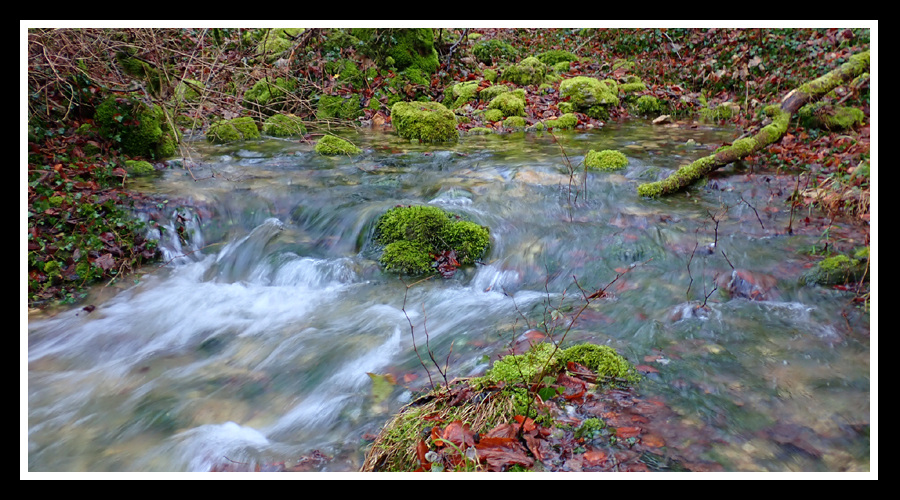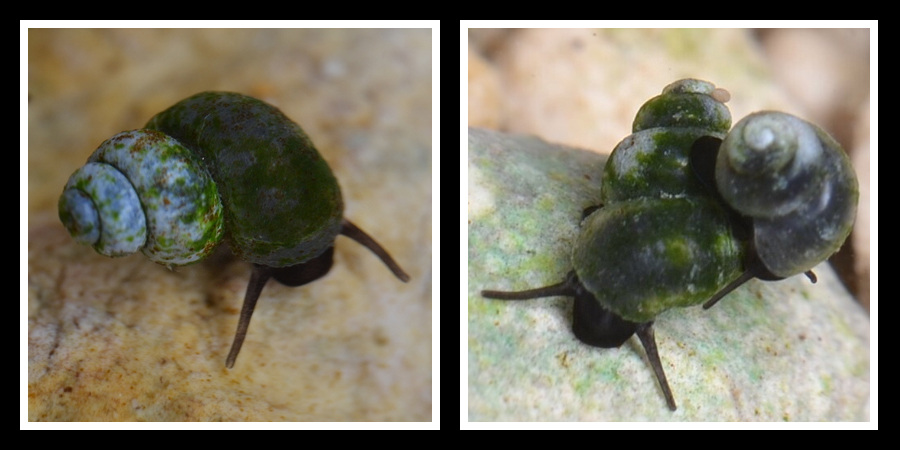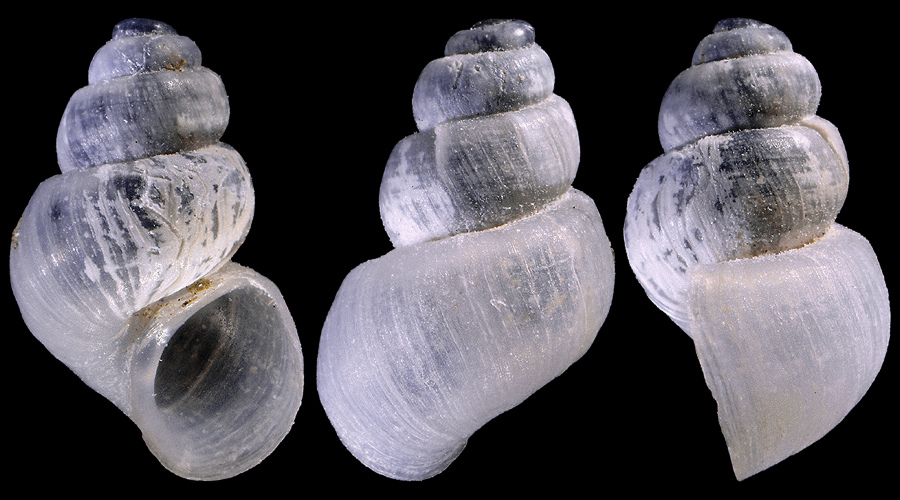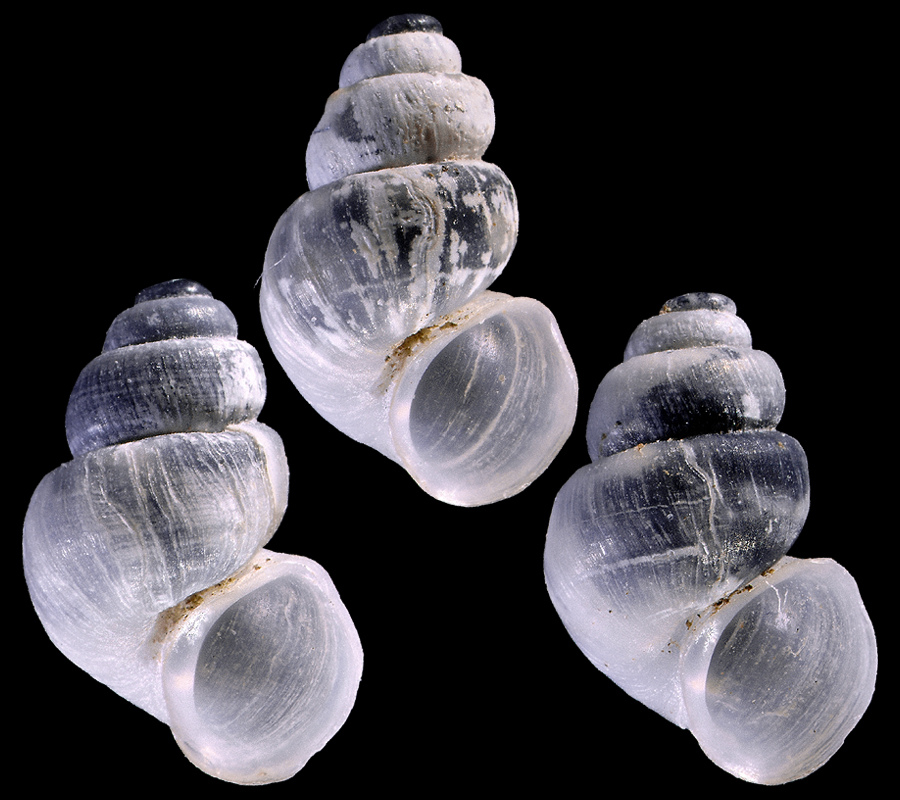Bythinella viridis (Poiret, 1801)
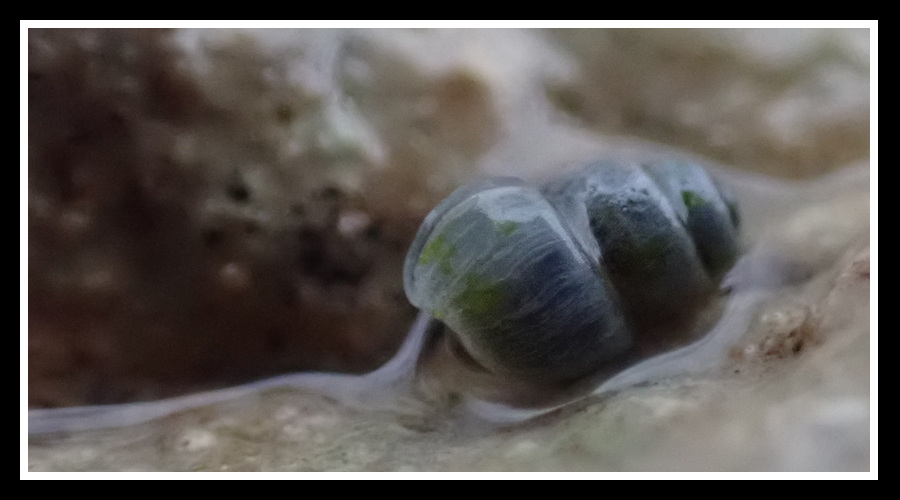
Known distribution: Seine drainage basin, east to the Vosges, and at least the upper Saône. Crenobiont. Original taxon: Bulimus viridis. Synonyms: lancevei Locard for the populations of lower Seine, carinulata Drouët for the populations of the eastern part of the Seine watershed. The taxon carinulata was itself subject to an abundant synonymy: burgundina, scalarina, turgidula, viridiformis… As for many members of the genus, a morphological description of the shell does not give specific characters. The shell is often coloured in green (viridis) by the diatoms, with a deep suture and a flat subsutural plate (hence the epithet scalarina); the whorls can be a little convex (turgidula) or rather flat with an angled shoulder (carinulata).
A specimen from one of the emergences that give birth to the small tributary of the upper Ouche river, at Le Petit Étang, Lusigny-sur-Ouche, Côte d’Or. Altitude ≈ 375m.

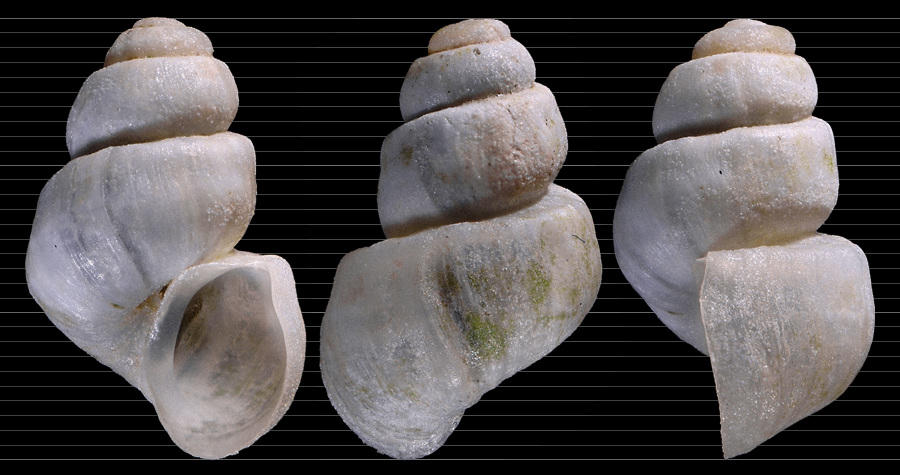
« Hydrobia carinulata – Shell conoid-elongated, turriculate, almost smooth, barely shiny, quite solid, transparent, grayish or whitish, covered with a fairly thick greenish-gray coating, which gives it a rough appearance; whorls 6, flat, angular and keeled posteriorly, with regular growth, separated by a wide, very deep and almost canaliculated suture; summit slightly pointed; umbilical slit barely visible; aperture oblique, irregularly oval-pyriform, strongly angular and canaliculated posteriorly; peristome continuous, sinuous superiorly, a little thickened towards the columellar edge, a little widened or more advanced towards the free edge. » – H. Drouët: Mollusques terrestres et fluviatiles de la Côte d’Or, Paris 1867, p.90. Same spot. 3mm.
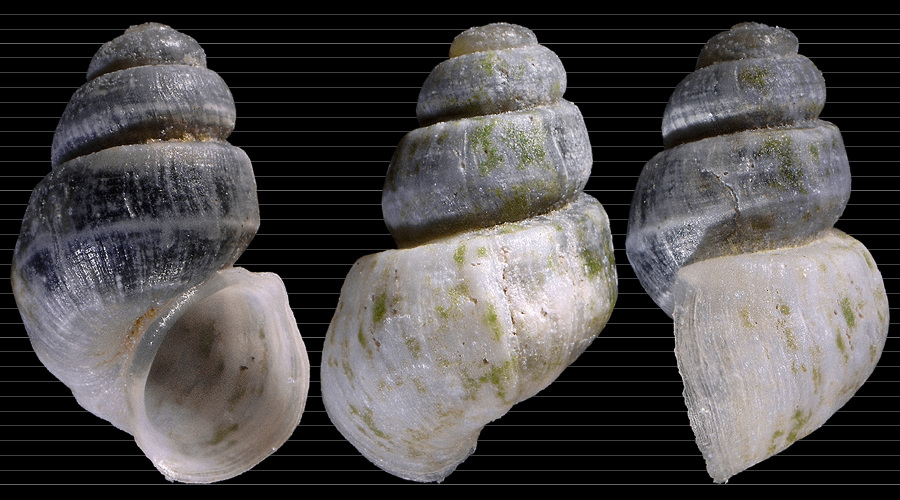
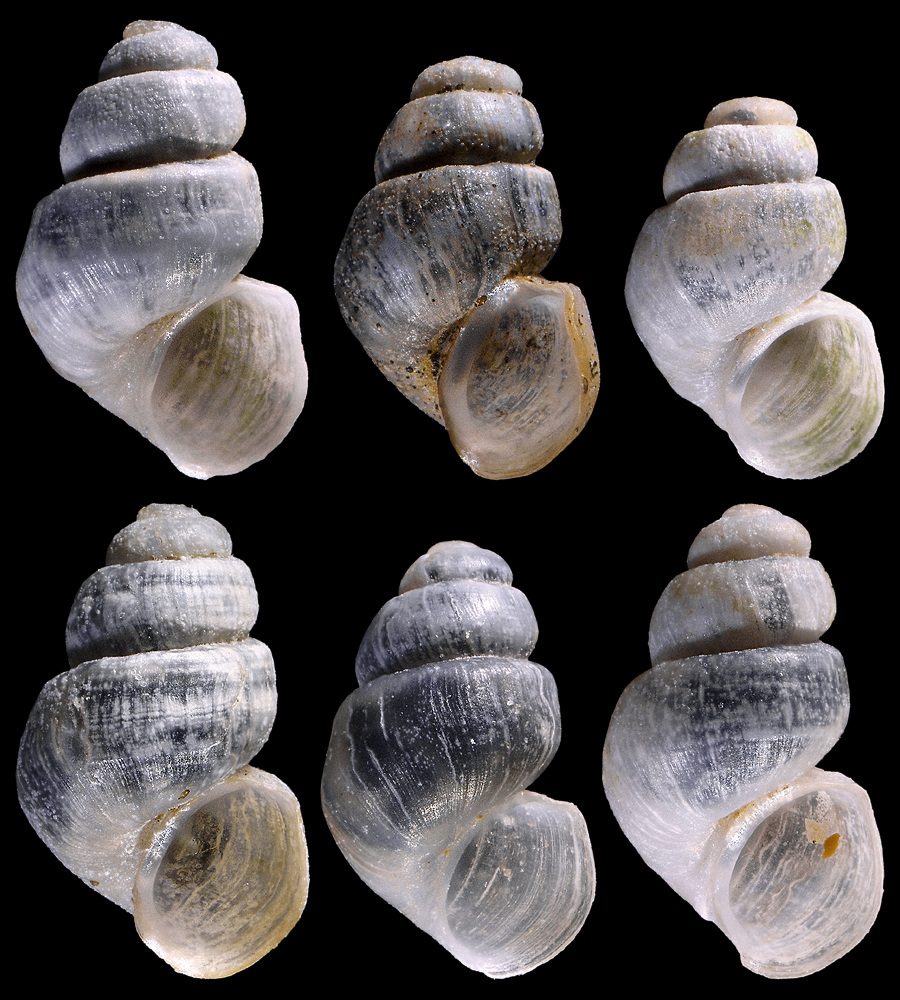
Top-left: a “carinulata”. Bottom-right: a “turgidula”.
